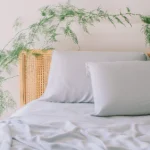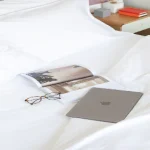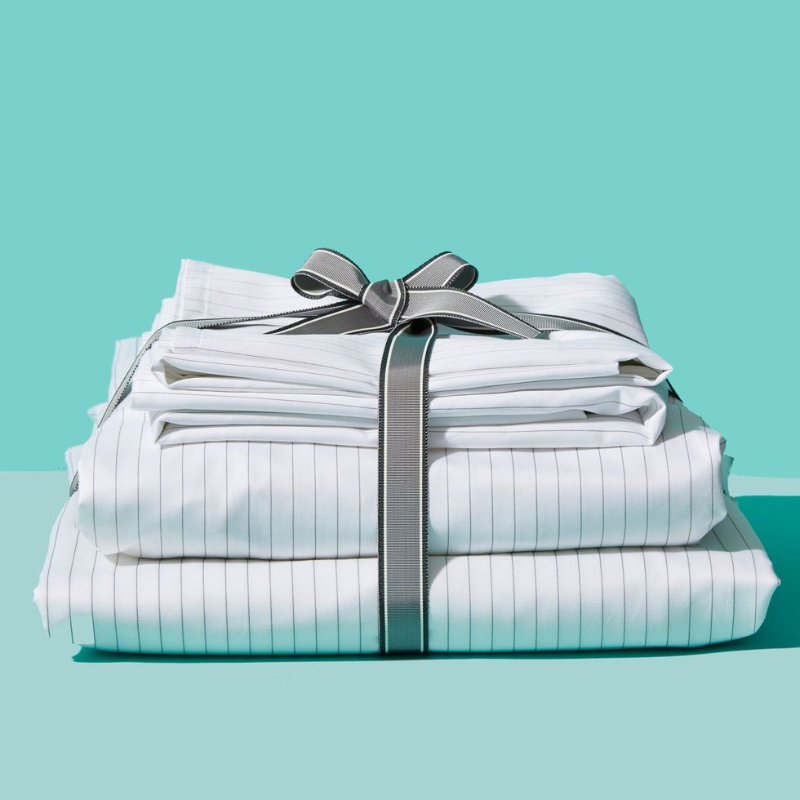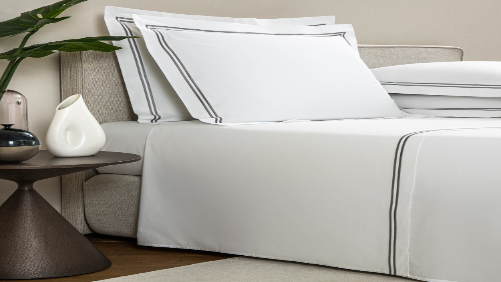
Bamboo sheets: the perfect combination of environmental protection and health
November 22, 2023
Aoka Bed Sheet: Quality Bedding Solutions for Peaceful Sleep
November 24, 2023Guide to Bed Sheets Selection
Welcome to Aoka Blog. The topic of this article is how to choose good bed sheets. It will guide you on how to choose high-quality and high-quality bed sheets from the most critical factors. At the same time, you can also consider Aoka bed sheets. As a professional bed sheet manufacturer, Aoka uses the best raw materials to make bedding.
Aoka’s bedding is not only high quality but also very comfortable and cheap. Consumers, distributors, traders, and brand owners are welcome to inquire about Aoka’s customized products, and let us be responsible for your products!
Back to the original article, if you invest in the best quality bedding, you will find that it can really improve your sleep. We demystify bed sheet terminology and help you choose the bedding that’s right for you.
The feeling of Bed Sheets
In addition to your duvet, pillows, and mattress, the sheets you choose can also have a big impact on how your bed feels and how you sleep. Since your sheets, duvet covers, and pillowcases sit next to your skin every night, it’s important to consider what sheets will provide you with the best night’s sleep. After all, there are many types of bed sheets.
Different fabrics and tissues have different properties and therefore have different feels. The best bedding is made from the finest natural materials and woven to the highest standards.
Decide whether you would like your bedding to be smooth and silky, cool and refreshing, or cozy and warm. This will help you choose the fabric and weave of your sheets that will work best for you.
Fabric/Fiber
When it comes to bedding, the choice of fabric or fiber has the biggest impact. Do you prefer natural fibers or synthetic fibers? Different fabrics have unique feel and properties.
Cotton Sheets
Cotton is the most common fabric used to make sheets and sheets. High-quality cotton is natural, breathable, biodegradable, and has an excellent skin-friendly feel.
Egyptian Cotton
Egyptian cotton is known as the best bedding cotton in the world and a favorite! Sheets made from Egyptian cotton are strong, lightweight, and breathable. Egyptian cotton feels better with use and every wash. Egyptian cotton comes from a different plant than regular cotton, which gives it unique and superior properties. Its extra-long fibers produce finer, smaller-diameter threads or yarns that can be woven into luxurious and durable fabrics unmatched by other kinds of cotton.
SUPIMA/PIMA COTTON
Supima or Pima cotton is produced in the United States and competes with Egyptian cotton. Like Egyptian cotton, it is made from long and short fibers and has premium properties.
Brushed Cotton/Flannel
Brushed cotton is made from loose-spun cotton that is carefully brushed to create a soft, fuzzy raised texture. This fabric retains body heat, providing a warm and cozy feel while still remaining breathable. Brushed cotton is also called flannel or velvet fabric, but it should be noted that brushed cotton fabric is only brushed on the front side, while flannel or velvet fabric is brushed on both sides.
Polyester Cotton
Polycotton sheets or “easy care” sheets are made from a blend of man-made polyester (a type of plastic) and cotton. These sheets are generally inexpensive and easy to care for, dry quickly, and don’t require much ironing. However, it doesn’t have the luxurious, top-quality feel that other fabrics have. It’s also less breathable than natural fibers like cotton and linen, so it may not be a good choice for those who suffer from night sweats or sleep on a hotter night. Because polyester is made from petrochemicals, it is not as biodegradable as untreated natural fabrics. When washed, it also sheds plastic microfibers, which end up in our rivers and oceans.
Flax
The Flax is made from the natural long hollow fibers of the flax plant and is spun into yarn for use in bedding. Flax is mainly grown in Europe, with French, Belgian, and Chinese flax generally considered to be of the highest quality.
Our linen bedding range is made from French and Chinese linen. Linen is naturally breathable and insulating, so it provides year-round temperature regulation. Additionally, linen fabric is very strong and durable, which means linen bedding has a very long lifespan.
Flax fiber is naturally eco-friendly, renewable, and biodegradable; it is also antibacterial, which can be helpful for those with allergies or skin conditions. While linen may not feel as soft as cotton initially, it will get softer with each wash.
Aoka linen is washed in small batches, which relaxes the fibers, making the linen soft and lightweight, providing great comfort from night one.

Bedding Weaving of Bed Sheets
The way your bedding is woven can greatly affect its feel, durability, and comfort. Here are some common knitting styles:
Satin Weave
Satin sheets are typically made from tightly woven threads or yarns, giving them a smooth, soft feel. This weave is often used in premium cotton bedding.
Percale
Percale is a tightly woven fabric, so it often feels fresh and cool. This weave can be used on pure cotton or a blend of cotton and polyester.
Twill Weave
The twill weave creates a sheet with a diagonal pattern, giving it a unique texture and herringbone look. This type of sheet is usually soft and has good drape.
Jacquard Weaving
Jacquard sheets are made by using special looms to weave patterns directly onto the fabric. This adds a unique visual and tactile feel to the sheets.
Waffle Braid
This weave works by weaving yarns into a honeycomb grid structure with indented squares, creating a three-dimensional and highly textured fabric.
Jersey
Jersey sheets are made from the same knitted cotton or cotton blend material as regular T-shirts. They are usually soft and stretchy, but may not be particularly durable.
Synthetic Satin
Synthetic satin sheets are made from synthetic fibers that are tightly woven or knitted together to give a silky smooth finish. This type of sheet is usually cheaper, but may not be very durable and can easily snag.
Microfiber Weave
Microfiber is a synthetic fiber that can be made into fabrics that are soft, durable, and wrinkle-resistant. However, due to its dense texture, it may feel a little warm on hot days.
When choosing bedding, you can choose the appropriate weave and fabric based on your personal preferences and needs.

Number of Threads/GSM of Bed Sheets
A good bed sheet depends on the quality of the fabric, how it is woven, and the thread count of cotton, GSM linen, or Momme silk. Tall size doesn’t make up for poor-quality fabric, but it can go a long way in creating beautiful bedding.
Cotton Yarn Count of Bed Sheets
Thread count is a measurement used for cotton materials. It refers to the number of threads woven together per square inch of material. More threads woven together means a higher thread count. The right thread count can improve the smoothness, quality, and feel of your sheets.
Bedding thread counts typically range from 200 to 800 thread count, but thread counts of 1,000 thread count or higher are also available. However, the yarn count is not the most important indicator of the quality of bedding. What is more important is the quality of the cotton threads used to weave bedding. If the sheets are made of low-quality cotton, the quality will be poor.
Select 200 Counts of bed sheets and Above
Thread count less than 200 will cause severe wear, tear, and holes! Be aware of high thread counts of over 800 threads, they produce sheets and duvet covers that are very stiff, not very comfortable to sleep on, and difficult to iron! We chose a 600-thread count for our Egyptian cotton sheets.
Linen GSM
Linen is measured in GSM (grams per meter) and typically ranges from 100gsm to 200gsm. Our linen bedding range uses 150 GSM. We found the lower GSM to be too thin, while the higher GSM felt heavy and rough.
Written At the End–The Guide for Bed Sheets Selection
This article introduces how to choose the sheets that are most suitable for you based on feel, fabric or fiber, weaving process, and thread count. Other selection details will be updated tomorrow!
I hope this article can bring you substantial help. Aoka hopes that every family can use the most suitable and comfortable sheets!


